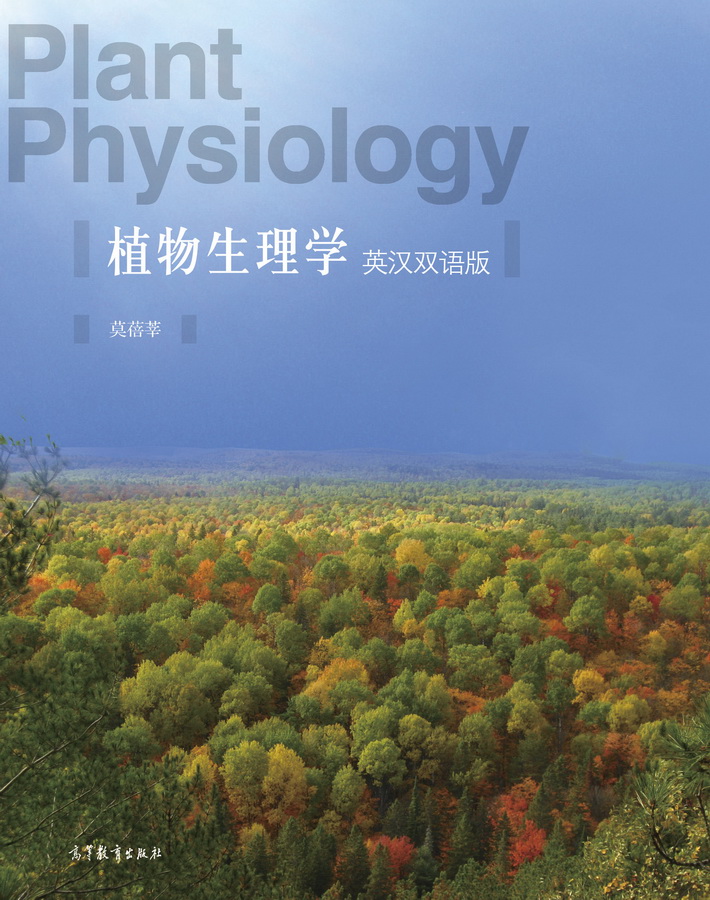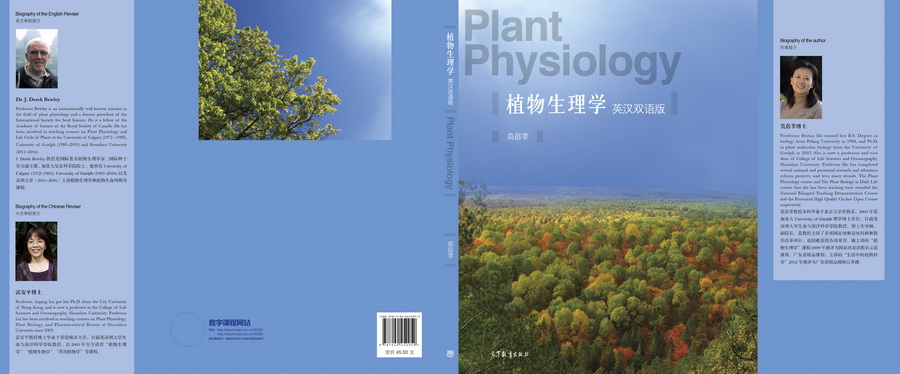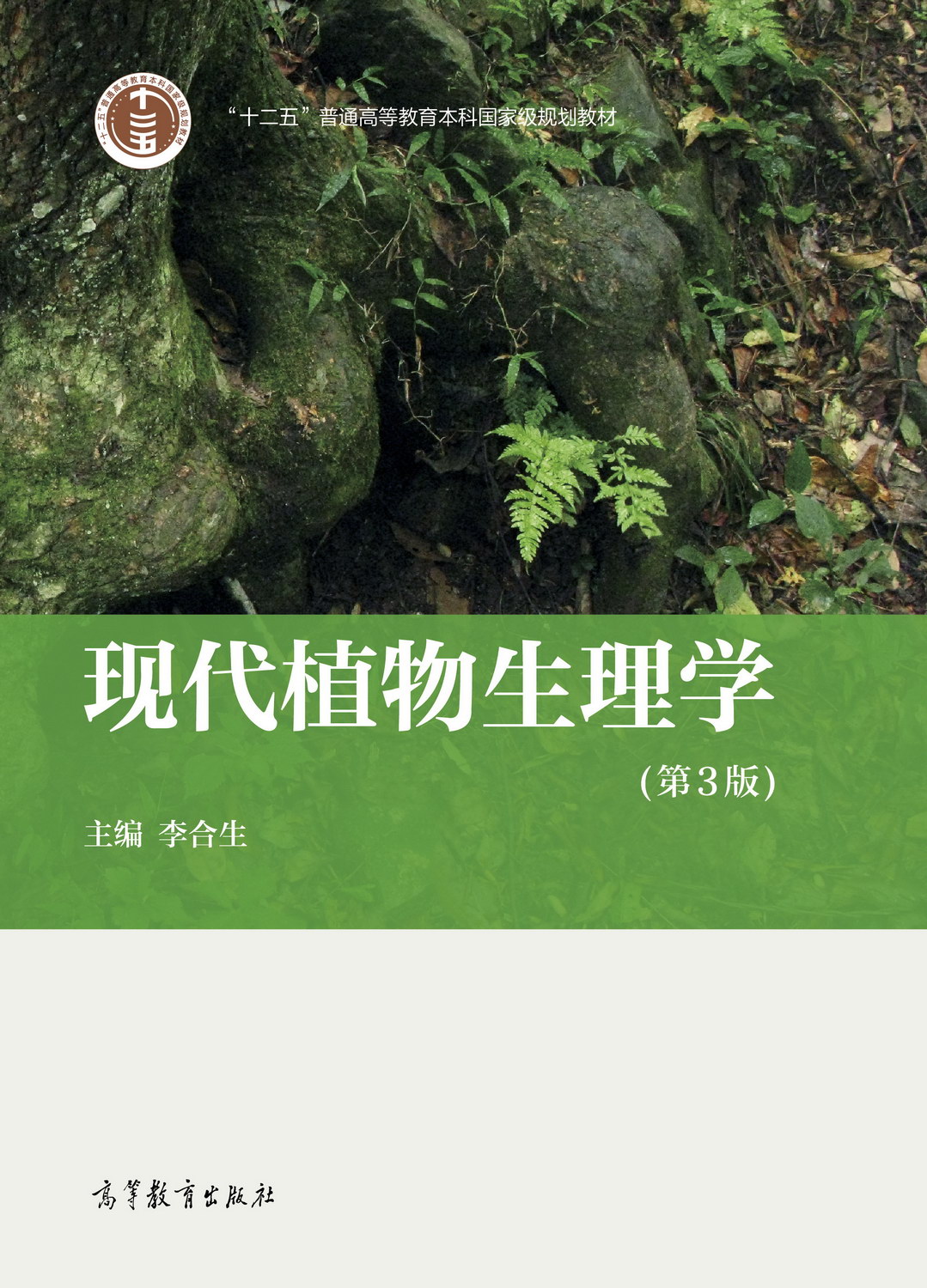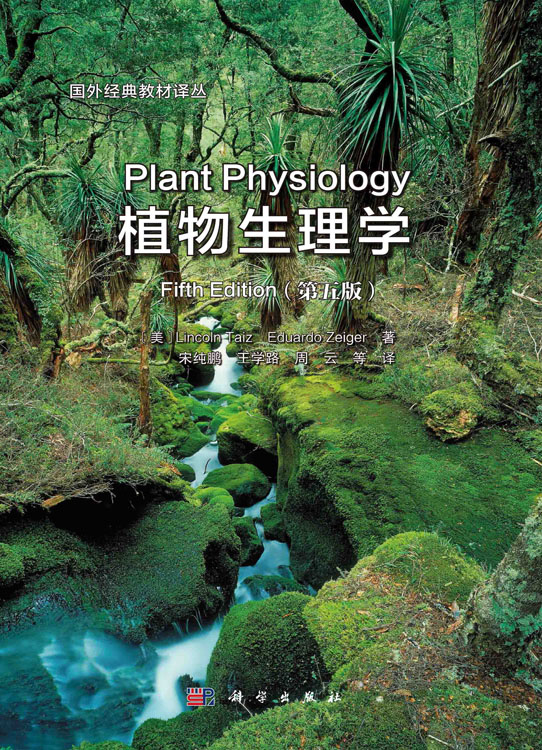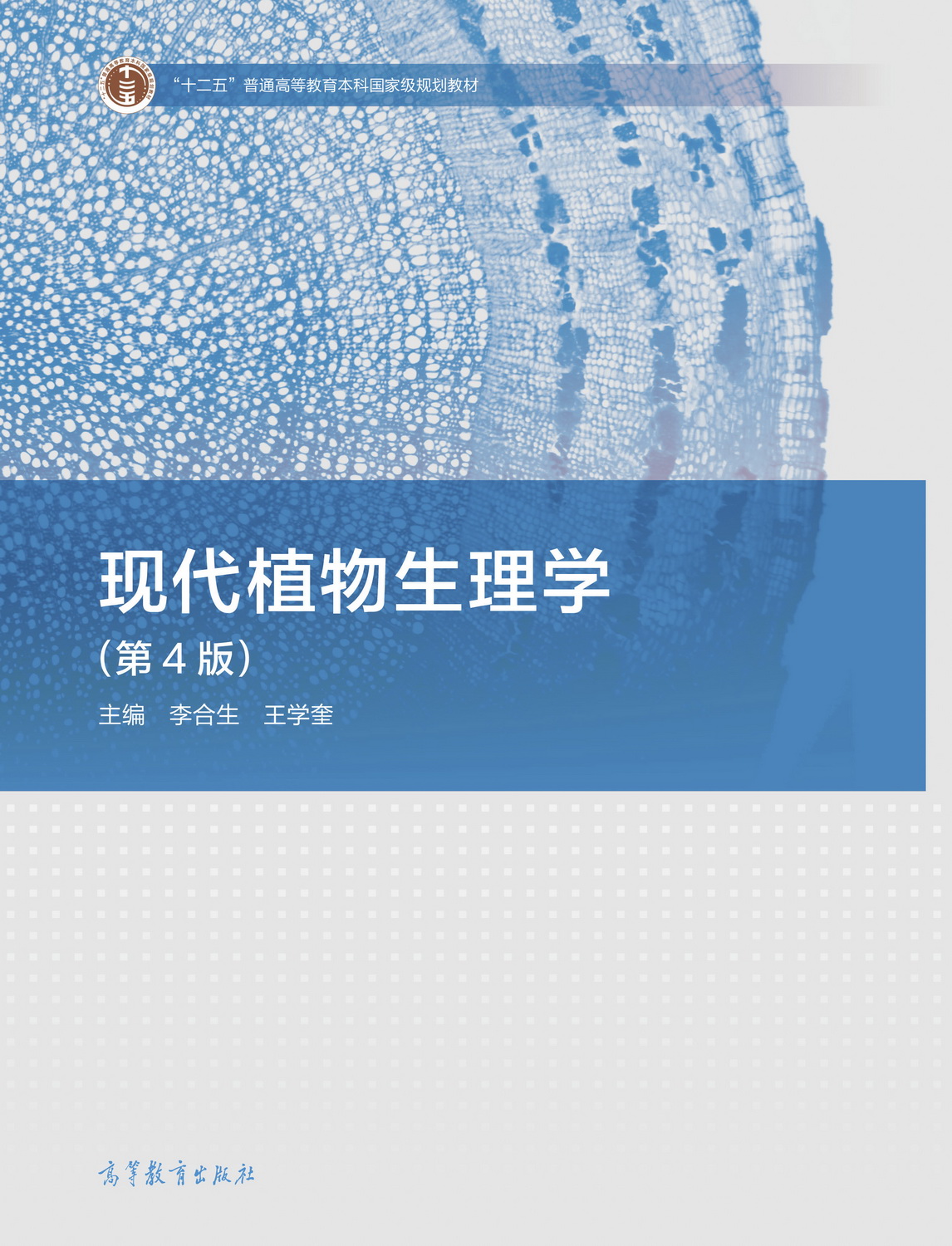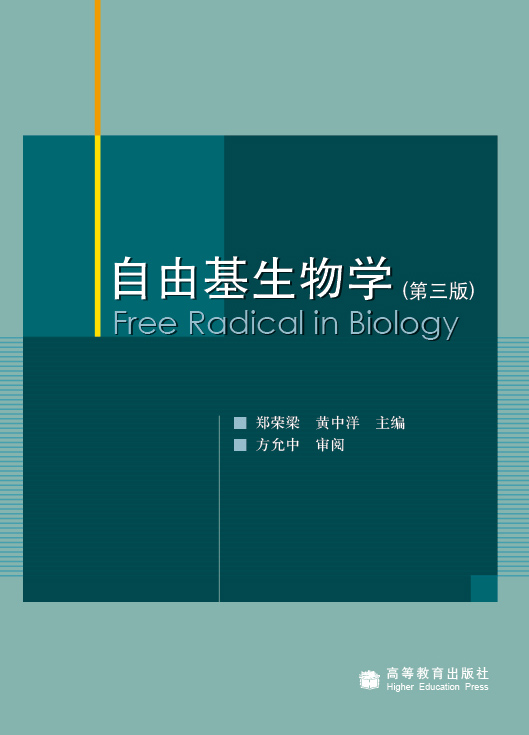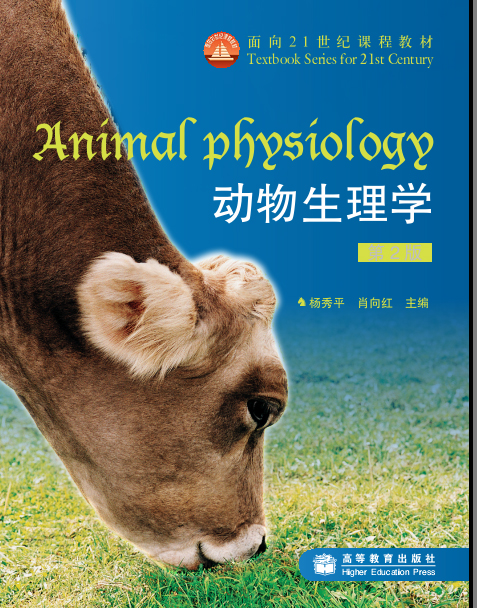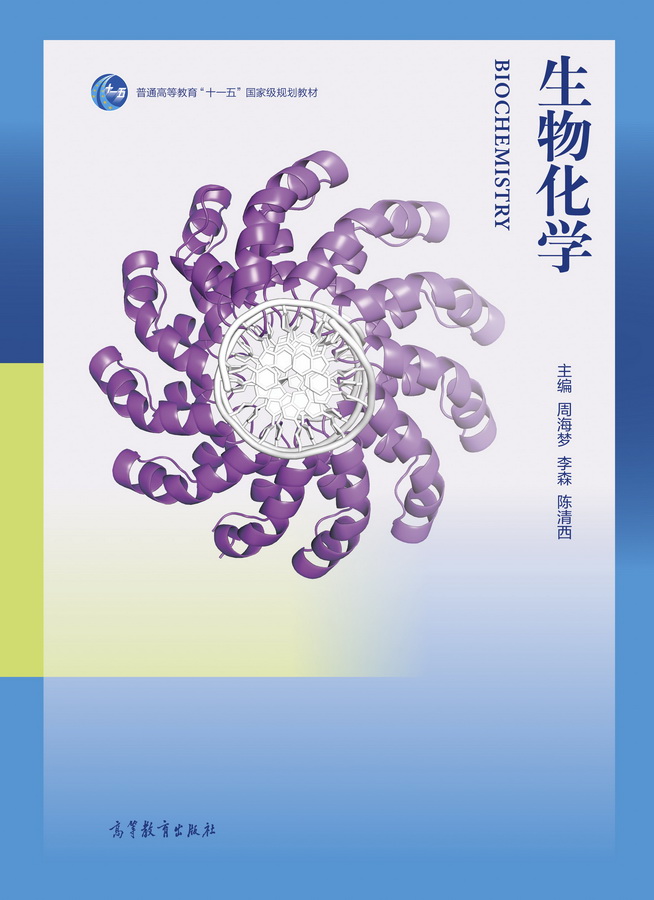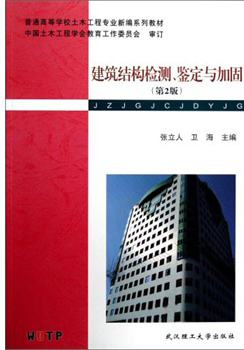植物生理学(英汉双语版)(附数字课程)
作者: 莫蓓莘
出版时间:2016-07
出版社:高等教育出版社
- 高等教育出版社
- 9787040452952
- 1版
- 30980
- 48262789-0
- 平装
- 大大16开
- 2016-07
- 630
- 322
- 理学
- 生物科学类
- Q945
- 生物科学类
- 本科
本教材围绕“整体植物生理”这一主题,阐述了植物的生长、发育以及应对环境的机制,内容基本覆盖植物生理学的知识点。
本书的突出特点是将植物生长发育的过程分解为一个个具体的事件,以植物生长发育的时间顺序为主线将这些事件串为一个相互关联的整体。在不同章节中出现的相关知识点均提示读者参阅该知识点所涉及的章节,使碎片化的知识变成一个有机的整体。
本书采用中、英文双语编写,英文审校由国际著名植物生理学家、加拿大皇家科学院院士J.Derek Bewley教授担任,保证了教材内容的先进性和英文表述的精确性。
本书可作为生物学相关专业的植物生理学双语教材,也可供从事植物生理学相关研究的师生、科研人员参考。
前辅文
Part 1 Plants, Water, and Minerals 植物、水分和矿物质
Chapter 1 Water Relations of Plants 植物的水分代谢
1.1 Essential Roles of Water 水分对植物的重要性
1.2 Translocation of Water 水分在植物体内的运输
1.2.1 The pathways for water movement across the plasma membrane 水分跨膜运输的途径
1.2.2 The major processes of water translocation 水分运输的主要过程
1.3 Water Potential 水势
1.3.1 The concept of water potential 水势的概念
1.3.2 Major components of water potential 水势的主要组成成分
1.3.3 Water movement in cells and tissues 水分在细胞和组织间的运输
1.4 Water Relations of the Whole Plant 植物整体和水分的关系
1.4.1 Absorption of water by roots 根系吸水
1.4.2 Water transport via the xylem 水分在木质部的运输
1.4.3 Mechanisms for the upward flow of water 水分向上运输的机制
1.5 Transpiration 蒸腾作用
1.5.1 Biological significance of transpiration 蒸腾作用的生物学意义
1.5.2 Types of transpiration 蒸腾作用的类型
1.5.3 The structure and role of stomata 气孔的结构和作用
1.5.4 The mechanism of stomatal opening and closing (Mechanism of potassium ion uptake)气孔运动的机制(钾离子运输机制)
1.5.5 Physiological indexes for transpiration 蒸腾作用的生理指标
1.5.6 Environmental factors that affect the rate of transpiration 影响蒸腾速率的环境因素
Summary 小结
Chapter review questions 本章复习题
Chapter 2 Plants and Mineral Nutrients 植物的矿质营养
2.1 Essential Nutrient Elements 必需矿质元素
2.1.1 Essential elements 必需元素
2.1.2 Roles and deficiency symptoms of essential nutrients必需矿质元素的生理作用及相关的缺素症状
2.2 Mineral Nutrient Uptake by Plant Cells 植物细胞对矿质元素的吸收
2.2.1 Simple diffusion 简单扩散
2.2.2 Facilitated diffusion 协助扩散
2.2.3 Active transport 主动运输
2.3 Mineral Transport in Roots 矿质元素在根中的运输
2.3.1 Mineral uptake by roots 根部对矿质元素的吸收
2.3.2 Xylem loading 木质部装载
2.4 Assimilation of Mineral Nutrients 矿质元素的同化作用
2.4.1 The nitrogen cycle 氮循环
2.4.2 Sulfur assimilation 硫的同化
2.4.3 Phosphorus assimilation 磷的同化
Summary 小结
Chapter review questions 本章复习题
Part 2 Plants, Energy, and Carbon 植物、能量和碳
Chapter 3 Photosynthesis 光合作用
3.1 The Nature of Light 光的性质
3.2 Light Absorption 光的吸收
3.2.1 Fate of light energy 光能的去向
3.2.2 Absorption spectra and action spectra 吸收光谱和作用光谱
3.2.3 The chloroplast 叶绿体
3.3 Photosynthetic Electron Transport 光合电子传递
3.3.1 Components of the photosynthetic electron transport chain 光合电子传递链的组成成分
3.3.2 Photosystem Ⅱ and water oxidation 光系统Ⅱ和水的氧化
3.3.3 Electron and proton flow through the cytochrome b6f complex通过细胞色素b6f 复合体的电子传递和质子跨膜转移
3.3.4 Photosystem 光系统Ⅰ
3.3.5 Cyclic electron flow 环式电子流
3.3.6 The overall effect of electron transport 电子传递的整体效应
3.3.7 Photophosphorylation 光合磷酸化
3.4 Carbon Reaction 碳反应
3.4.1 C3 cycle C3 循环
3.4.2 Net effect of the Calvin cycle 卡尔文循环的净效应
3.4.3 Regulation of the Calvin cycle 卡尔文循环的调控
3.5 Photorespiration 光呼吸
3.5.1 The bifunctional nature of Rubisco Rubisco 的双功能特性
3.5.2 An overview of photorespiration 光呼吸概述
3.5.3 The photorespiration pathway 光呼吸途径
3.5.4 Biological significances of photorespiration 光呼吸的生物学意义
3.6 Carbon Concentrating Mechanisms for More Efficient Photosynthesis提高光合作用效率的CO2 浓缩机制
3.6.1 C4 plants C4 植物
3.6.2 Crassulacean acid metabolism 景天酸代谢(CAM)
3.6.3 Comparison of CAM with C4 metabolism CAM 和C4 途径的比较
3.7 Export and Storage of Photosynthetic Products 光合产物的输出和贮藏
3.7.1 Output of the Calvin Cycle 卡尔文循环产物的输出
3.7.2 Synthesis of sucrose in the cytosol 细胞质中蔗糖的合成
3.7.3 Starch synthesis in the chloroplast 叶绿体中淀粉的合成
Summary 小结
Chapter review questions 本章复习题
Chapter 4 Translocation and Distribution of Photoassimilates植物体内同化产物的运输及分布
4.1 Pathway and Direction of Photoassimilate Translocation 光合同化物运输的途径和方向
4.1.1 Evidence for phloem translocation 光合同化物在韧皮部中运输的证据
4.1.2 The basic structure of phloem 韧皮部的基本结构
4.1.3 The composition of phloem exudate 韧皮部汁液的组成
4.2 Mechanism of Translocation in the Phloem: Pressure-Flow Hypothesis韧皮部运输的机制:压力流学说
4.2.1 Establishment of a pressure potential gradient in the phloem 韧皮部中压力梯度的形成
4.2.2 Supporting evidence for the pressure-flow hypothesis 压力流学说的支持证据
4.3 Phloem Loading 韧皮部装载
4.3.1 Apoplastic loading 质外体装载
4.3.2 Symplastic loading 共质体装载
4.4 Phloem Unloading 韧皮部卸出
4.4.1 Symplastic unloading 共质体卸出
4.4.2 Apoplastic unloading 质外体卸出
4.4.3 Apoplastic unloading requires metabolic energy 质外体卸出需要能量
4.5 Assimilate Allocation 同化产物的配置
4.6 Assimilate Partitioning 同化产物的分配
Summary 小结
Chapter review questions 本章复习题
Chapter 5 Respiration 植物的呼吸作用
5.1 An Overview of Respiration 呼吸作用概述
5.1.1 The substrates of respiration 呼吸作用的底物
5.1.2 Significance of cellular respiration 呼吸作用的生理意义
5.2 Stages of Respiration 呼吸作用的生化途径
5.2.1 Glycolysis and substrate-level phosphorylation 糖酵解和底物水平磷酸化
5.2.2 The citric acid cycle 柠檬酸循环
5.2.3 The oxidative pentose phosphate pathway 戊糖磷酸途径
5.3 The Mitochondrial Electron Transport Chain 线粒体中的电子传递链
5.3.1 An overview of the electron transport chain 电子传递链概述
5.3.2 Components of the mitochondrial electron transport chain 线粒体中电子传递链的组成
5.3.3 The chain of mitochondrial electron transport from NADH to O2 线粒体中电子传递的路径
5.3.4 Proton gradients and oxidative phosphorylation 质子梯度和氧化磷酸化
5.4 Fermentation 发酵作用
5.5 Respiration in Intact Plants and Tissues 完整植株和组织的呼吸作用
Summary 小结
Chapter review questions 本章复习题
Chapter 6 Secondary Metabolites 次生代谢产物
6.1 Secondary Metabolites 次生代谢产物
6.2 Terpenes 萜类
6.2.1 Biosynthesis of terpenes 萜类的生物合成
6.2.2 The functional roles of terpenes 萜类的功能
6.3 Phenolics 酚类
6.3.1 Biosynthesis of phenolics 酚类的生物合成
6.3.2 Simple phenolics 简单酚类
6.3.3 Complex phenolics 复杂酚类
6.4 Nitrogen-Containing Secondary Metabolites 含氮次生代谢产物
6.4.1 Akaloids 生物碱
6.4.2 Cyanogenic glycosides 含氰苷
Summary 小结
Chapter review questions 本章复习题
Part 3 Plant Growth and Development 植物生长和发育
Chapter 7 Signal Transduction Pathway 信号转导途径
7.1 Overview of the Signal Transduction Pathway 信号转导途径概述
7.1.1 Concept and process of the signal transduction pathway 信号转导途径的概念和过程
7.1.2 Genetic and epigenetic information systems 遗传和表观遗传信息系统
7.1.3 Plant responses to signals 植物对信号刺激的反应
7.2 Perception of a Signal by a Receptor 受体识别信号
7.2.1 Receptors 受体
7.2.2 Categories of signals 信号的类别
7.3 Transmembrane Signal Transduction 跨膜信号转导
7.3.1 G-proteins G 蛋白
7.3.2 Process of G-protein mediated transmembrane signal transductionG 蛋白介导的跨膜信号转导过程
7.4 Messenger Systems 信使系统
7.4.1 Calcium as a secondary messenger 钙信号系统
7.4.2 Inositol phospholipid signaling system 肌醇磷脂信号系统
7.4.3 Cyclic adenosine monophosphate (cAMP) signaling system 环单磷酸腺苷(cAMP)信号系统
7.5 Protein Phosphorylation and Dephosphorylation 蛋白质的可逆磷酸化
7.5.1 Protein kinases 蛋白激酶
7.5.2 Calcium-dependent protein kinase (CDPK) 钙依赖型蛋白激酶(CDPK)
Summary 小结
Chapter review questions 本章复习题
Chapter 8 Plant Growth Substances 植物生长物质
8.1 Auxins 生长素类
8.1.1 Discovery of auxin 生长素的发现
8.1.2 Auxin distribution 生长素的分布
8.1.3 Auxin transport 生长素的运输
8.1.4 Metabolism of IAA 生长素的代谢
8.1.5 Action of auxin 生长素的生理作用
8.1.6 Characteristic features of auxin physiology 生长素的生理作用特点
8.1.7 Commercial uses of auxin 生长素的商业应用
8.2 Gibberellins 赤霉素类
8.2.1 Discovery of gibberellins 赤霉素的发现
8.2.2 Structure of gibberellins 赤霉素的结构
8.2.3 Distribution and transport of gibberellins 赤霉素的分布和运输
8.2.4 Biosynthesis of gibberellins 赤霉素的生物合成
8.2.5 Biological roles of gibberellins 赤霉素的生理作用
8.2.6 Mechanism of gibberellin action 赤霉素作用的机制
8.3 Cytokinins 细胞分裂素类
8.3.1 Discovery of cytokinins 细胞分裂素的发现
8.3.2 Structure of cytokinins 细胞分裂素的结构
8.3.3 Distribution and transport of cytokinins 细胞分裂素的分布和运输
8.3.4 Biosynthesis and metabolism of cytokinins 细胞分裂素的合成与代谢
8.3.5 Biological roles of cytokinins 细胞分裂素的生理作用
8.4 Ethylene 乙烯
8.4.1 Discovery of ethylene 乙烯的发现
8.4.2 Structure and transport of ethylene 乙烯的结构和运输
8.4.3 Biosynthesis and metabolism of ethylene 乙烯的生物合成和代谢
8.4.4 Regulation of ethylene biosynthesis 乙烯生物合成的调控
8.4.5 Biological roles of ethylene 乙烯的生理作用
8.5 Abscisic Acid 脱落酸
8.5.1 Discovery of abscisic acid 脱落酸的发现
8.5.2 Structure of abscisic acid 脱落酸的结构
8.5.3 Distribution and transport of abscisic acid 脱落酸的分布和运输
8.5.4 Biosynthesis of abscisic acid 脱落酸的生物合成
8.5.5 Biological roles of abscisic acid 脱落酸的生理功能
8.6 Other Plant Hormones 其他植物激素
8.6.1 Brassinosteroids 油菜素内酯
8.6.2 Salicylic acid 水杨酸
8.6.3 Jasmonates 茉莉酸
8.6.4 Polyamines 多胺
8.7 Plant Growth Regulaters 植物生长调节剂
8.7.1 Plant growth promoters 植物生长促进剂
8.7.2 Plant growth inhibitors 植物生长抑制剂
8.7.3 Plant growth retardants 植物生长延缓剂
Summary 小结
Chapter review questions 本章复习题
Chapter 9 The Influence of Light on Plant Development 光形态建成
9.1 Discovery, Properties and Distribution of Phytochrome 光敏色素的发现、性质和分布
9.1.1 Discovery of phytochrome 光敏色素的发现
9.1.2 Properties of phytochrome 光敏色素的性质
9.1.3 Distribution of phytochrome 光敏色素的分布
9.2 Three Types of Phytochrome-Mediated Responses 光敏色素介导的三种反应类型
9.3 The Mechanism of Phytochrome 光敏色素的作用机制
9.3.1 Cellular and molecular mechanisms 细胞和分子机制
9.3.2 Phytochrome regulates membrane potential and ion fluxes 光敏色素调控膜电位和离子流
9.3.3 Phytochrome regulates gene expression 光敏色素调节基因表达
9.4 UV-A/Blue Light and UV-B Responses 蓝光和紫外光反应
9.4.1 UV-A/Blue light responses 蓝光反应
9.4.2 UV-B responses 紫外光反应
Summary 小结
Chapter review questions 本章复习题
Chapter 10 Plant Growth and Development 植物的生长和发育
10.1 Cell Division, Growth and Differentiation 细胞的分裂、生长和分化
10.1.1 Cell division 细胞分裂
10.1.2 Cell growth 细胞生长
10.1.3 Cell Differentiation 细胞分化
10.2 Plant Vegetative Development 植物的营养生长
10.2.1 Embryogenesis 胚胎发育
10.2.2 Seed germination 种子萌发
10.2.3 Plant organ formation 植物器官的形成
10.3 Coordination of Plant Development 植物生长的相关性
10.3.1 Coordination of shoot and root development 根和地上部分的相关性
10.3.2 Coordination between the main stem and lateral stem growth 主茎与侧枝的相关性
10.3.3 Relationship between vegetative growth and reproductive growth营养生长与生殖生长的相关性
10.4 Plant Movement 植物的运动
10.4.1 Tropisms 向性运动
10.4.2 Nastic movement 感性运动
10.4.3 Circadian rhythm 昼夜节律
Summary 小结
Chapter review questions 本章复习题
Chapter 11 Plant Reproductive Physiology 植物的生殖生理
11.1 Juvenility 幼年期
11.2 Photoperiodism 光周期现象
11.2.1 Definition of photoperiodism 光周期现象的概念
11.2.2 Three types of photoperiodic responses 光周期反应的三种类型
11.2.3 Critical day length 临界日长
11.2.4 Important roles of the night length 夜长在光周期现象中的重要性
11.2.5 Perception of the photoperiodic signal 光周期信号的识别
11.2.6 Photoperiodic induction 光周期诱导
11.2.7 The role of phytochrome in photoperiodism 光周期现象中光敏色素的作用
11.2.8 Florigen, a transmissible floral stimulus 开花素
11.3 Vernalization 春化作用
11.3.1 Definition of vernalization 春化作用的概念
11.3.2 Effective temperature and required duration of exposure春化作用的有效温度及所需的持续时间
11.3.3 Devernalization 脱春化作用
11.3.4 Perception of vernalization 春化作用的感知
11.3.5 Molecular aspects of vernalization 春化作用的分子机制
11.3.6 Floral hormones 与开花有关的激素
11.4 Formation of Floral Organs 花器官的形成
11.4.1 ABC model and ABCDE model of control of flower development ABC 模型与ABCDE 模型
11.4.2 Formation of gametes 配子的形成
11.4.3 Germination of pollen 花粉的萌发
11.4.4 Double fertilization 双受精作用
11.4.5 Self-incompatibility 自交不亲和性
Summary 小结
Chapter review questions 本章复习题
Chapter 12 Plant Maturation and Senescence 植物的成熟与衰老
12.1 Seed Maturation Physiology 种子成熟生理
12.1.1 Deposition of reserves within storage tissues 营养物质在贮藏器官内的积累
12.1.2 Hormones in the developing seed 种子发育过程中的植物激素
12.1.3 Maturation drying 成熟脱水
12.1.4 Environmental effects on seed development 环境条件对种子发育的影响
12.2 Fruit Development and Ripening 果实的发育与成熟
12.2.1 Fruit development 果实的发育
12.2.2 Fruit ripening 果实的成熟
12.3 Seed Dormancy 种子的休眠
12.3.1 Concept of dormancy 休眠的概念
12.3.2 Categories of dormancy 休眠的类型
12.3.3 Mechanisms of dormancy 休眠的机制
12.3.4 Dormancy breakage 休眠的解除
12.4 Senescence 衰老
12.4.1 Concept of senescence 衰老的概念
12.4.2 Types of senescence 衰老的类型
12.4.3 Cytological and biochemical changes during senescence 衰老时的细胞及生化变化
12.4.4 Macromolecule degradation and nutrient remobilization during senescence衰老时大分子降解及营养物质再利用
12.4.5 Up-regulated and down-regulated genes during senescence 衰老时的上调基因与下调基因
12.4.6 Environmental and endogenous influences on senescence 环境及内源因素对衰老的影响
12.4.7 Mechanisms of senescence 衰老的机制
12.5 Programmed Cell Death (PCD) 程序性细胞死亡
12.6 Abscission of Plant Organs 器官的脱落
12.6.1 Concept of abscission 脱落的概念
12.6.2 Environmental factors that influence abscission 影响脱落的环境因素
12.6.3 Hormonal factors that influence abscission 影响脱落的激素
Summary 小结
Chapter review questions 本章复习题
Chapter 13 The Physiology of Plants Under Stress 植物的抗逆生理
13.1 Overview of Stress Physiology 逆境生理概述
13.1.1 Definition of stress 逆境的定义
13.1.2 Impacts of stress on plants 逆境对植物的影响
13.1.3 Plant responses to stresses 植物对逆境的适应
13.2 Drought Stress 干旱胁迫
13.2.1 Types of drought 干旱的类型
13.2.2 Major damage caused by drought 干旱对植物的主要损伤
13.2.3 Mechanisms of drought resistance 抗旱性的机制
13.3 Flooding Stress 洪涝胁迫
13.3.1 Damages caused by flooding stress 洪涝对植物的损伤
13.3.2 Mechanisms of flooding resistance 抗涝机制
13.4 Chilling Stress 寒冷胁迫
13.4.1 Symptoms of chilling injury 冷害症状
13.4.2 Mechanisms of chilling injury and chilling resistance 冷害及抗冷性的机制
13.5 Freezing Stress 冰冻胁迫
13.5.1 Damage caused by freezing stress 冰冻胁迫对植物的损伤
13.5.2 Mechanisms of freezing resistance 抗冻机制
13.6 Heat Stress 热胁迫
13.6.1 Damage caused by heat stress 热胁迫对植物的损伤
13.6.2 Mechanisms of heat resistance 抗热机制
13.7 Salinity Stress 盐胁迫
13.7.1 Damage caused by salinity stress 盐胁迫对植物的伤害
13.7.2 Mechanisms of salinity resistance 抗盐机制
13.8 Pathogen Stress 病原微生物胁迫
13.8.1 Pathogen effects on plants 病原微生物对植物的伤害
13.8.2 Strategies of pathogen resistance 抗病机制
Summary 小结
Chapter review questions 本章复习题
References 参考文献
Index 索引

